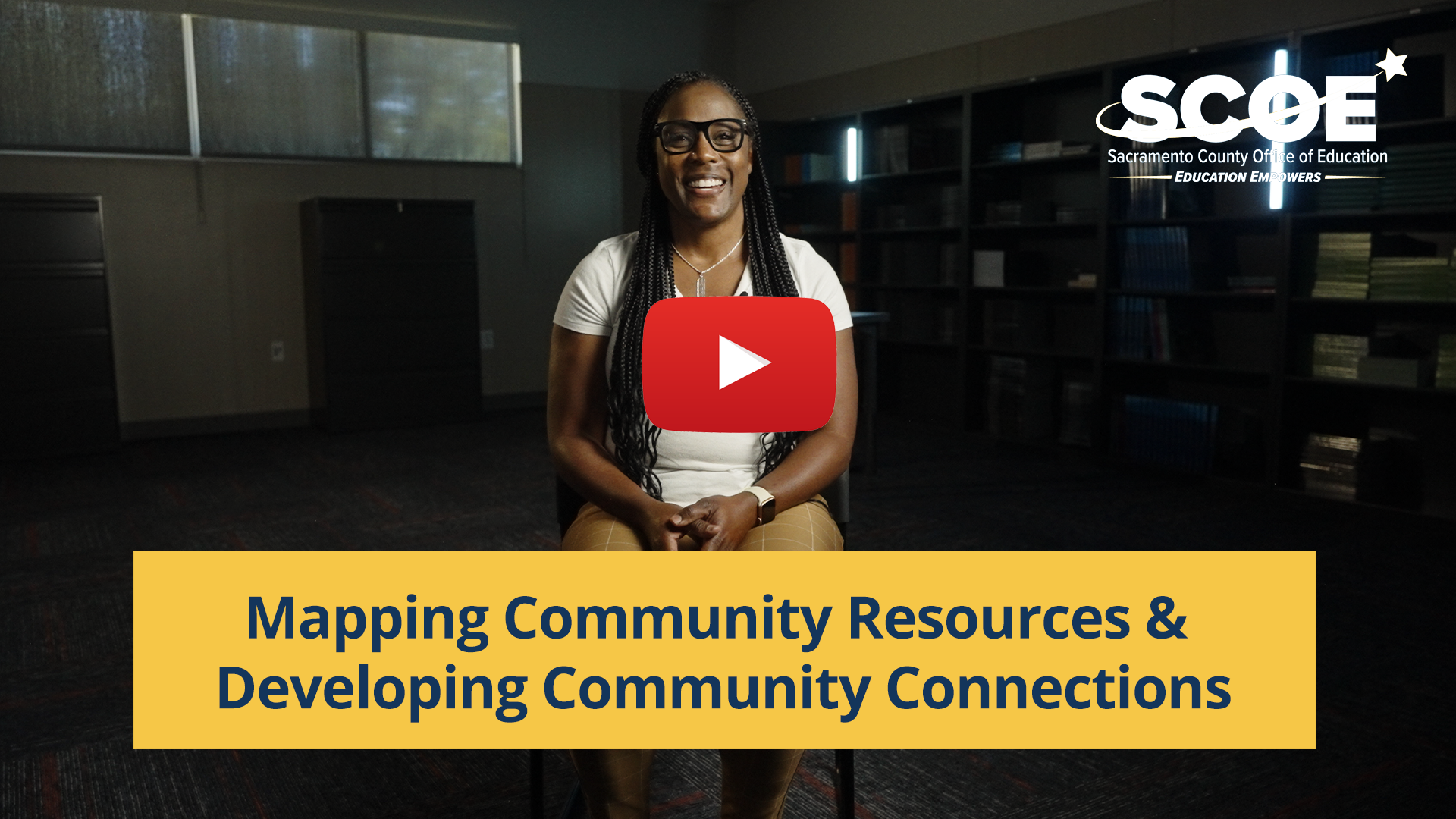
Family Navigator Role
Phase 1: First 6 Weeks of School
Training Resource Home > Family Navigator > Phase 1: First 6 Weeks of School
Phase Overview
In this training phase, Family Navigators will begin integration into school and community culture and develop school relationships. They will develop an understanding of their role within larger district and school teams. They will collaborate with internal and external team members to assess the needs of clients, families, and the community. Additionally, they will begin delivering support to clients and families, communicating with families and the community to identify additional areas of need.
Phase Goals/Objections
Begin integration into school/community culture and develop school relationships
Develop understanding of role within larger district/school teams
Collaborate with internal and external team members to assess needs of clients, families, and the community
Begin mapping community resources to support clients and families in need
Begin delivering support to clients and families
Communicate with families and the community to identify additional areas of need
Begin developing relationships with community partners
Role Understanding
Learn the importance of enhancing further understanding of the Family Navigators pivotal role in transforming schools into wellness centers, emphasizing comprehensive student health. Gain insight into the necessity of recognizing and addressing your own internal biases within the frameworks of diversity, equity, inclusion, and belonging.
-
• Develop comfortability with explaining the SBMHW Program to site staff and community partners
• Develop comfortability explaining the family navigator role in SBMHW Program to other
• Understand personal impact on increasing access to care
• Connect with established family navigator for a 1:1 (in the first two weeks). Discussion topics to include:
○ Personal introductions
○ Understanding and experience with SBMHW
• Connect with clinician(s) for a 1:1. Discussion topics to include:
○ Personal introductions
○ Preferred communication methods and frequency
○ Review of program and school-based experience
○ Collaborative approach to meeting site and client needs
○ Client support needs
○ Parent/caregiver community needs
• Develop understanding of internal biases as related to the diversity, equity, inclusion, and belonging framework
• Understand personal impact in increasing access to care
• Learn SBMHW program crisis protocols and circumstances family navigators should be made aware of
• Ensure SCOE Communications and SCOE-U communications are received to learn about programs and trainings
• Attend and collaborate in regional team meetings, SBMHW team meetings, professional development and training, and events within my school community
• Attend training and collaboratives relevant to role, including those provided by community partners and local/statewide entities
• Obtain brochures by submitting the following information to program analyst:
○ Professional photo
○ Professional biography
School Navigation
Explore how to effectively integrate into a school's operational environment. This includes obtaining keys and learning access procedures, setting up a functional space for client interactions and familiarizing oneself with campus logistics so that you have tools ready to make you and your client feel at ease.
-
• Obtain information related to school schedule and calendar for assigned district(s)
• Develop understanding of the school community and surrounding demographics, including strengths
• Identify areas to apply strengths and skill set to contribute to the development of the school as a Center of Wellness
• Address discrepancies between school calendar and SCOE calendar with coordinator, and develop work plan for calendar conflicts
• Share Outlook calendar with coordinator, clinician II and applicable SCOE staff
• Understand room/space/campus access and check-in process
• Learn necessary site navigation information including staff parking, restrooms, etc.
• Develop hours of operation and share via email with coordinator and additional applicable SCOE and school site staff
• Understand assigned district email account should be used to receive information only

Providing Support Services
Discover how to effectively collaborate with clinicians and site staff to identify and support families in need, offer timely responses to assistance requests, and complete registration packets. Gain insights into school demographics, existing roles, and referral processes, and provide confidential support and peer assistance in various settings.
-
• Collaborate with clinician and site staff to identify families in need of support or resources in the community
• Offer rapid response (contact family within 24-48 hours) when a family has requested assistance
• Work collaboratively with clinicians to complete registration packets
• Ensure all documentation for support services provided are complete in Teams and referral list is updated
• Review information with existing COST if applicable :
○ Collaborate with clinician(s) to renew consents, Release of Information (ROI) forms, and screeners by utilizing the referral tracker
○ Identify and understand the current on-site mental health direct services
○ Establish/learn the call out process (passes, phone calls)
○ Inquire about attendance
○ Review demographic makeup of the school as well as history of school (i.e. demographic shifts that have occurred over the years, teacher/administration retention rate, etc.)
○ Inquire about other existing roles, similar to the family navigator role, and discuss delineation of supports and collaboration for clarity
○ Review Referral Process and Tracking for Family Navigators
○ Attend staff meeting to introduce family navigator and role (if appropriate)
• Listen and provide confidential support during multidisciplinary team meetings and 1:1 engagement with families
• Provide peer support in one-on-one and group settings, to colleagues and site staff
Community Navigation
Explore how to build relationships with school, district, and community partners, and stay informed about key events and opportunities for outreach and networking. Learn to create and share a calendar of cultural observances and significant dates, develop connections with various departments and community resources, and engage in cultural and community events.
-
• Get acquainted with school, district and community partners:
○ Obtain district calendar(s) to ensure awareness of pertinent events that may require outreach and/or could lead to training/networking opportunities (ex. Back to School nights, family or district site meetings, etc.
○ Uplift events to clinicians and SCOE team (including other family navigators) for support
○ Create a calendar to identify school, SCOE, and community events as they pertain to cultural observances and holidays
○ Share newly developed calendar with clinicians, family navigators, coordinator, clinician II
• Seek out and develop relationships with various departments and community partners within assigned district(s) in region [including but not limited to Family and Community Engagement (FACE), McKinney Vento (unhoused services), Foster Youth Services, Improve Your Tomorrow (IYT), Mutual Assistance Network, etc.]
• Map community resources:
○ Identify what supports already exist (Tier 1, Tier 2, Tier 3)
○ Identify and develop relationships with “people in the know” (secretary, custodian, student aid, campus monitors, expanded learning staff, etc.)
○ Identify other resources (ex. lists, school programs, etc.)
○ Schedule visits to the neighborhood or frequently used community-based organizations (community agencies, County contracted, etc.)
○ Participate in school and community engagement, cultural recognition and awareness events
• Develop and distribute surveys to sites to gain insight on parent/student needs for potential parent and student workshops/trainings
• Share survey with other staff or parent liaison if helpful
• Connect with clinicians and specified school staff or administrators to discuss workshop/training topics selected from survey
• Create proposal(s) for workshops/trainings/presentations
• Create advertisement(s) for workshops/trainings/presentations
• Share proposal(s) and advertisement(s) with school administration to confirm (content, location, date/time, etc.)
• Share finalized proposal(s) and advertisement(s) with coordinator for review and approval, prior to distribution






